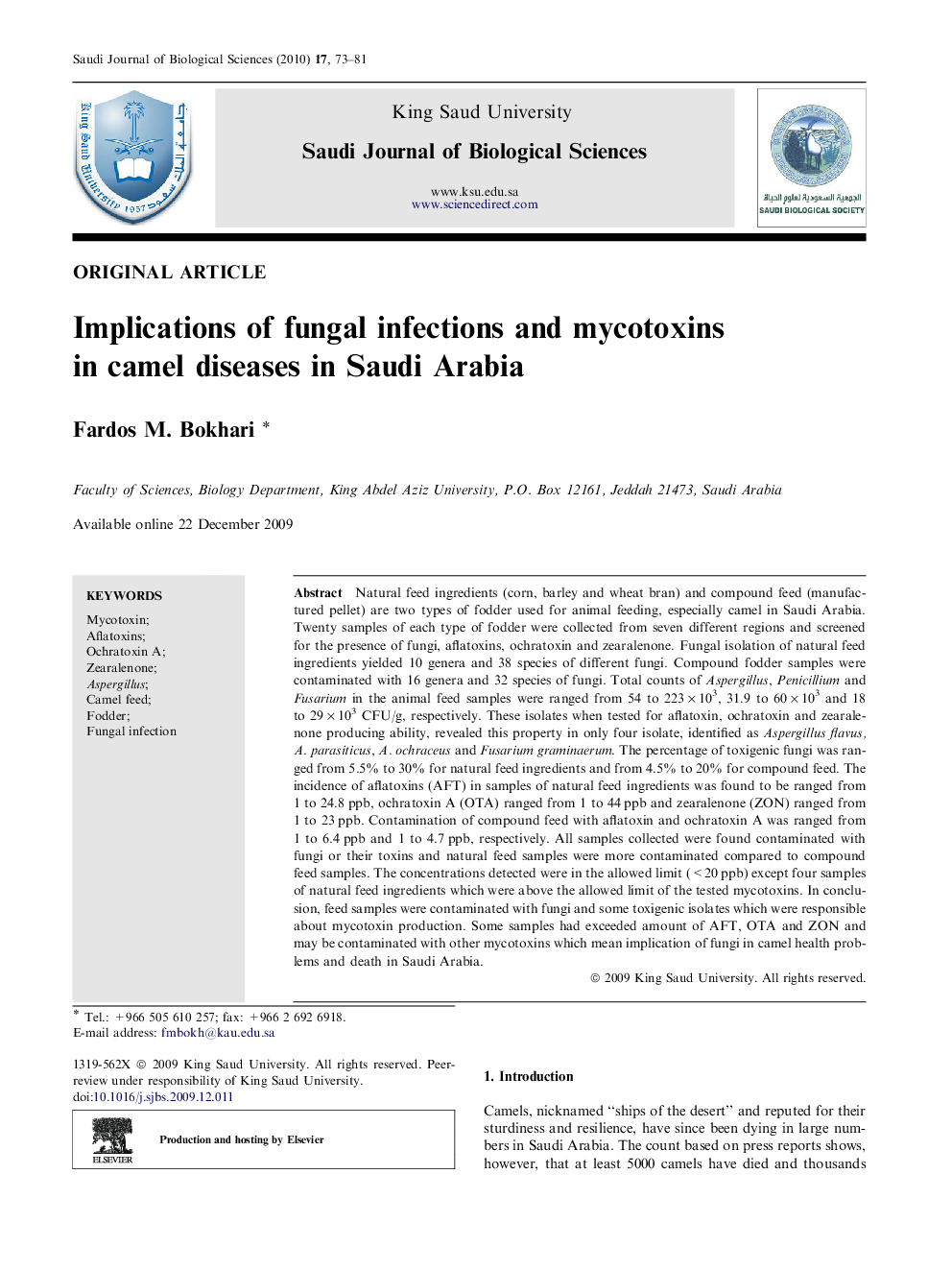| کد مقاله | کد نشریه | سال انتشار | مقاله انگلیسی | نسخه تمام متن |
|---|---|---|---|---|
| 4406608 | 1618703 | 2010 | 9 صفحه PDF | دانلود رایگان |

Natural feed ingredients (corn, barley and wheat bran) and compound feed (manufactured pellet) are two types of fodder used for animal feeding, especially camel in Saudi Arabia. Twenty samples of each type of fodder were collected from seven different regions and screened for the presence of fungi, aflatoxins, ochratoxin and zearalenone. Fungal isolation of natural feed ingredients yielded 10 genera and 38 species of different fungi. Compound fodder samples were contaminated with 16 genera and 32 species of fungi. Total counts of Aspergillus, Penicillium and Fusarium in the animal feed samples were ranged from 54 to 223 × 103, 31.9 to 60 × 103 and 18 to 29 × 103 CFU/g, respectively. These isolates when tested for aflatoxin, ochratoxin and zearalenone producing ability, revealed this property in only four isolate, identified as Aspergillus flavus, A. parasiticus, A. ochraceus and Fusarium graminaerum. The percentage of toxigenic fungi was ranged from 5.5% to 30% for natural feed ingredients and from 4.5% to 20% for compound feed. The incidence of aflatoxins (AFT) in samples of natural feed ingredients was found to be ranged from 1 to 24.8 ppb, ochratoxin A (OTA) ranged from 1 to 44 ppb and zearalenone (ZON) ranged from 1 to 23 ppb. Contamination of compound feed with aflatoxin and ochratoxin A was ranged from 1 to 6.4 ppb and 1 to 4.7 ppb, respectively. All samples collected were found contaminated with fungi or their toxins and natural feed samples were more contaminated compared to compound feed samples. The concentrations detected were in the allowed limit (<20 ppb) except four samples of natural feed ingredients which were above the allowed limit of the tested mycotoxins. In conclusion, feed samples were contaminated with fungi and some toxigenic isolates which were responsible about mycotoxin production. Some samples had exceeded amount of AFT, OTA and ZON and may be contaminated with other mycotoxins which mean implication of fungi in camel health problems and death in Saudi Arabia.
Journal: Saudi Journal of Biological Sciences - Volume 17, Issue 1, January 2010, Pages 73–81